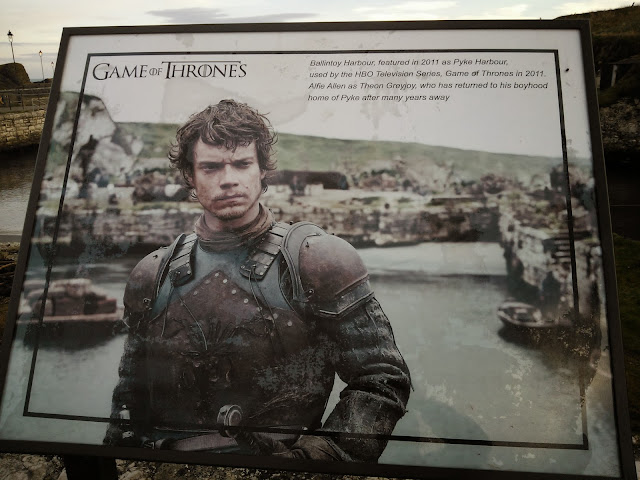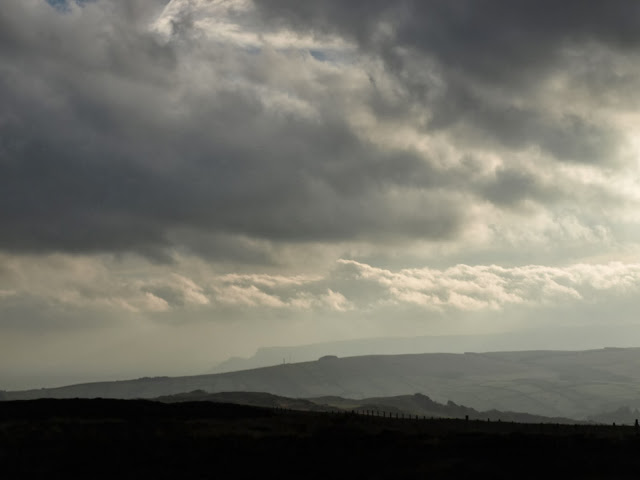THE GIANTS CAUSEWAY.
THE LEGEND
Finn McCool (Fionn mac
Cumhail) an Irish Giant lived on an Antrim headland
and, one day when going about his daily business, a Scottish Giant named Fingal
began to shout insults and hurl abuse from across the channel. In anger Finn lifted a clod of earth and threw it at the giant as
a challenge, The earth landed in the sea. Fingal
retaliated with a rock thrown back at Finn and shouted that Finn was lucky that
he wasn't a strong swimmer or he would have made sure he could never fight
again. Finn was enraged and began lifting huge clumps of earth from the shore,
throwing them so as to make a pathway for the Scottish giant to come and face
him. However, by the time he finished making the crossing he had not slept for a
week, and so instead devised a cunning plan to fool the Scot.
Finn disguised himself as a baby in a cot and
when his adversary crossed the causeway & came to face him, Finn's wife told the Giant that Finn was
away but said quietly; "Shhh now, don't wake the baby". The Scottish giant became
apprehensive, for if the son was so huge, what size would the father be?
In his haste to escape, Fingal sped back along the
causeway Finn had built, tearing it up as he went to prevent Finn from following him. He is said to have fled to a
cave on Staffa which is to this day named 'Fingal's Cave'.
Other versions of the legend include Finn
throwing a huge piece of earth which then became the Isle Of Man and
the hole which it left behind became Lough Neagh.
THE BORING REALITY
Since the 18th century The Giant's
Causeway has often been described as 'The Eighth Wonder Of The World' and once
you have visited the site you will quickly see why.
The area consists of an estimated
40,000 hexagonal basalt columns, which were formed during a volcanic eruption 60
million years ago.
Strangely, the Causeway is thought to
have lain undiscovered by the outside world until a visit in 1692 from the
Bishop Of Derry (Londonderry). The Bishop alerted authorities in Dublin, who
then notified learned circles in London. Many papers were produced and many
theories on how it had been formed were put forward.
Many of these theories were deeply
rooted in science and although very valid, they make a very boring read. My
favourite explanation of how the Giant's Causeway came to be, lies in the legend
of Finn McCool.
After a three hour drive, we arrived in Bushmills.
Our brilliant B&B, Cottesmore. Everything about this place was spot on. Rae and John made us very welcome and comfortable for our stay.
Our lovely, romantic bedroom.
They also fed us like royalty!!!
(Note - white pudding as well as black - MMMMMM!)
(Note - white pudding as well as black - MMMMMM!)
The next morning, we were up and off early to make the most of the precious few winter hours of daylight. When we reached the Causeway car park, I noticed this lovely, well-preserved Georgian post box.
The National Trust have decided, in their wisdom, that the old information hut wasn't grand enough, so spent eight and a half MILLION pounds on this impressive new building. Does it need it? It’s a beautiful thing, no doubt about that, with the columnar design meant to mimic the basalt of the Causeway.
We wanted to visit the causeway at dawn for pictures, but were bemused by the fact that the centre was only open from 9 –5PM, BUT it said the causeway was open dawn until dusk. How could this be??? As, if you look at their web site, it seems like you have to go through the centre to access the causeway (at £8:50 EACH). Not so. The causeway is OPEN ACCESS at all times, but of course, they would rather you pay. They also have all the parking close by sewn up, so I felt like I was being bullied into parting with my cash.
(so I didn’t).
These are the columns through which you enter the centre. You can see the ticket machine on the right. You can't even get through the centre DOORS to ask a question without you pay your £8:50!!
The access tunnel has been ‘swallowed up’ at the side of the centre, but here it
is – just in case YOU want to go and visit without being fleeced!
After passing through the tunnel, you can walk down this road
to the causeway.
There is also a bus every 15 minutes, but we felt that the
walk heightened the anticipation of what was to come.
When you turn the corner at the bottom of the road, THIS is
what hits you!!
It really is amazing – and probably looks even better under
strong sunlight. We were lucky today, as at least it wasn't raining or cold, but
there was little direct sunlight.
Amazing to think all this is natural – it looks like something out of a film
set.
This is a shot I took off the web of the Northern lights over the
Causeway.
What we wouldn’t give to be here at a time like this.
These columns make for a great sea defense, seeming to have no noticeable erosion at all!
Sue absolutely LOVED it here, and she said it lived up to all her expectations over the years.
Here's a couple of videoes of the Causeway.
A panorama of the causeway.
Yours truly, as you can see, it was just us and the causeway!
Looking across to the 'Giants chimney'.
A sweep looking back from the causeway.
This part doesn't look natural though, I think they may have blasted through for access.
Port Noffer.
The Giant's boot, said to have fallen from Fingal as he ran back to Scotland, having seen the size of Finn's 'baby'!
Just for size comparison, you HAVE to strike the pose!
(I wish I had a pound for everyone who's done this)
Sue too.
The amazing wall of basalt columns.
Causeway and Aird snout.
Panorama from Port Noffer.
Looking across Port Noffer to the Giants chimney.
The road to Fingal's cave.
Happy visitors.
There were several of these wooden benches, with legends inscribed on them.
These are called ‘the Organ Pipes’. From a distance, it looks like they’re in
the mouth of a cave, but it’s an optical illusion caused by the differing
colours in the rock.
Sue stands by them for perspective.
A small, sunlit rock in the bay.
Looking up the Organ pipes.
Close by – the feature known as the ‘Giants chimneys’ – if they were smoking, Legend has it that Finn was home!
A short walk around the headland brought us to this – the end
of the path!
That big landslip to the left was the cause of the closure,
and the National trust have no intention of re-opening it.
So, the way back up was via the 162 ‘Shepherd's steps’ to the
top of the cliffs. These steps were built so shepherds could fetch errant sheep
back up to pasture.
I think I’d have left them!
Looking across Port Noffer to the Causeway.
The cliffs, on top of which is the Heritage Coast walk.
Read about that walk by clicking HERE
Here’s my little shepherdess, perched on the cliff edge, taking pics for me.
We had NO idea what this object was. Was it washed up on the beach?
Had it been built there?
Answers on a postcard........
I also had to get close to the edge for some shots.
A zoomed study of the other side of the Giant's chimney.
A really nice topographic plate, naming all the pertinent parts of the Causeway.
After a short walk, we decided to turn back and make tracks,
as we only had a limited amount of time, and lots of plans on how to fill it.
A quick stop at the hotel for coffee and mince pies was in
order though.
Nice name for an Irish bus company :-)
WHO should we meet inside, but Santa!!!
Apparently, Sue has been a GOOD girl all year, so she gave him
her list.
(I hope she gave him mine, as well?).
We drove west along the coast to visit the remains of Dunluce
castle.
You can read up about it by clicking HERE
There is a sort of ‘visitor experience', but we didn't go in, preferring to walk
the grounds, taking pictures.
Right underneath the castle was a cave, into which the surf crashed.
I HAD to go in and take pictures.
Not a good shot, but great seen with the eyes, this is looking out into open sea from the cave.
I tried to imagine the number of people who had come down here for various reasons over the years.
We walked up to that arch you can see - it's just a sheer cliff on the other side.
A panorama of the castle.
Click on the picture to get a larger, readable version (then just click on back arrow to return to this blog)
We had time to visit one more place, as the light was beginning to fade already.
JUST the right conditions, and time of year, to visit 'The Dark hedges' - another location made famous in 'Game of Thrones'.
Very eerie - we'd never seen a place like this before. No wonder it was chosen for the series, but how do they FIND these amazing places???
It would look a lot kinder with leaves on the trees, but I had deliberately chosen this time of year for full effect.
This is what the 'Game of Thrones' program makers did to make it look authentic.
The next morning, we decided to hug the Heritage coast road around the north of Ireland, before heading inland for the airport when time demanded.
You can see why, even in this dull light, this coast is famed for it's beauty!
Driving along the Heritage coast road, I saw a small sign to
Balintoy harbour. We didn’t realise that this too was a location in G.O.T, but
luckily we drove down the winding road to investigate.
What we saw was this beautiful, peaceful harbour. There was an
information plaque explaining that it had been used as ‘Pyke Harbour’ in the
series.
This was how it looked when we were there;
This is the information plaque that tells the story, with Theon Greyjoy staring out at you.
THIS is how it looked when the program makers had given it
‘the treatment’.
Unfortunately, the cafe was closed (out of season), but it looks as though it
thrives when it’s busy here, which must be often.
The lovely Balintoy bay.
We moved on to Carrick-a-Rede and the famous rope
bridge.
This huge lime kiln was unusual because it was a double one –
not as efficient as it was first thought, so it wasn’t used for very long.
A short walk (and another £11:20 – thanks National Trust) saw
us at the rope bridge, or rather, above it.
A zoomed shot of the front of the fishing boat on Carick-a-rede island.You can see why they took SO MUCH trouble to get a boat into the water here, as the salmon fishing was some of the best in Ireland. The area to the right of the bridge is, in fact, the bowl of an extinct volcano. Acting like a dish, it offered a haven from the strong currents for the migrating fish. When fishermen found out about this – the salmon's days were numbered!
The rope (or, wire as it is now) bridge has been a magnet for
visitors for years. The current one is very new. We were told it is guaranteed
unbreakable, and is replaced every one million visitors. We were also told we
were about 250,000th, so we were safe! Again, out of season, we were the only
two people to cross the bridge and walk on the island while we were there.
Sadly, the rest of the island was closed to us for ’conservation reasons’,
so we could only stay on the short path (no reduction in price, though) ;-)
Steep steps lead down to the bouncy bridge.
This would unsettle a lot of people, indeed some have been SO
frightened that they had to be recovered by boat from the island, refusing to
make the return trip over the bridge (wimps!).
No such worries for Sue and I – we LOVED it.
My; 'I'm a celebrity - get me out of here' pose
This was what the fishermen used to catch the salmon from. It was lowered into
the volcanic ‘bowl’ and it and the catch, often up to sixty TONS of salmon,
hoisted back up to the small hut nearby on the island to be processed by hand,
before being carried up the steep cliffs to local ice houses, then onward to
markets.
Sheep island.
As we walked back along the cliffs, this little stonechat kept us company.
‘Stackaboy island’ – you can just see a wall there. Dolorite
used to be mined in the area, and was transported to this little rock via a
pulley, winch and tub system stretching right across from here to there.
The tubs would hit the wall, and tip out the Dolorite, which
was then loaded onto boats. It was used to build a lot of the roads in Glasgow,
Dublin & elsewhere.
Sheep island
As an early evening began to fall, we drove back.
The skies were magical, and I couldn’t resist stopping the car
to take a few pictures of the ethereal scene.
So – an early end to the day – but what to do NOW???? Too early to
eat.
I suddenly remembered they did tours around the Bushmills
distillery. It was 3:10pm – what time was the last tour, we wondered?
We went in, to discover it was at 3:30pm – RESULT!
You can read about Bushmills here;
This was the entrance, all Christmassy as befitted the time of
year.
One hot toddy each was consumed while we waited for the tour
to begin.
Unfortunately, no pictures of the actual inside of the
distillery are allowed.
This one of an old still was ok though.
Of course, part of the tour included a tasting session, which Sue & I took
full advantage of.
That evening, on advice from Rae, we went to the Tartine
restaurant in the old distillers arms pub.
Again, there were few people there. Two more couples, and what
looked like a party table of some sort, comprising about eight people, but that
was it!
The a la carte menu looked a bit pricey, but they did an
‘early bird’ menu, which was much more reasonable.
We took advantage of that, and had three wonderful
courses.
You can see their website here; HERE
The next day, we took a meandering course along the coast
road, visiting a few waterfalls, before heading on a more direct route back to
the airport and home.
We had been really lucky, and everything had gone according to
plan. This was only a quick tour, but had whetted our appetite, and
we know we’ll be coming back.
There’s a good video of the Giants Causeway on YouTube, click on this link to
see it; HERE











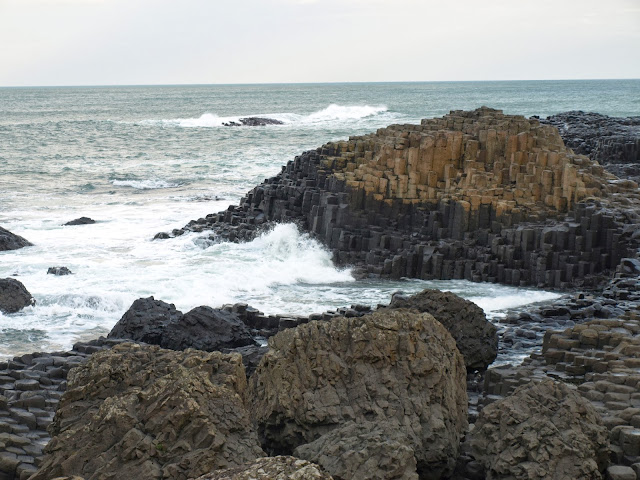





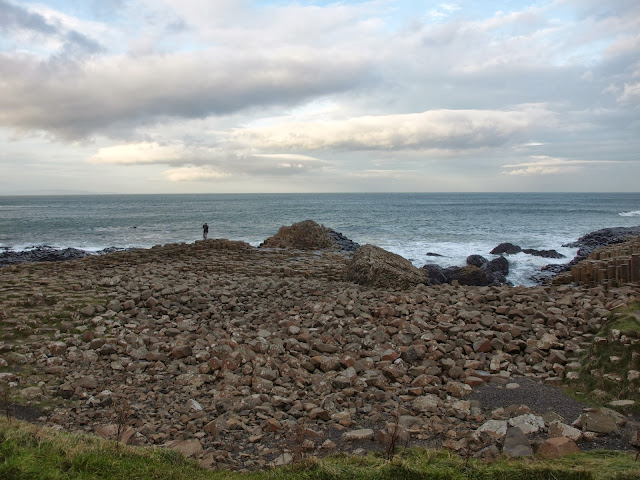




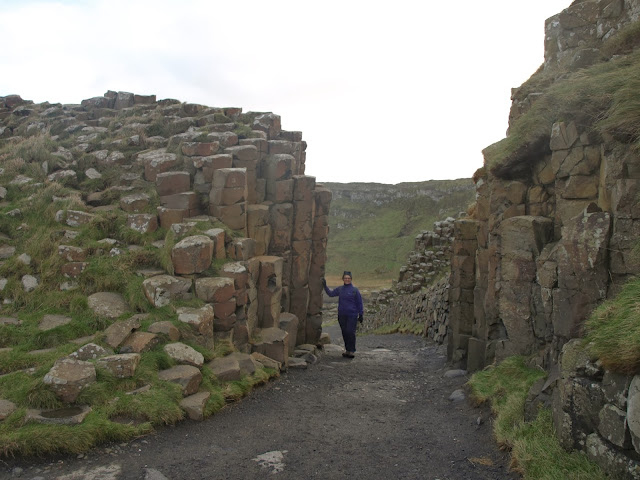
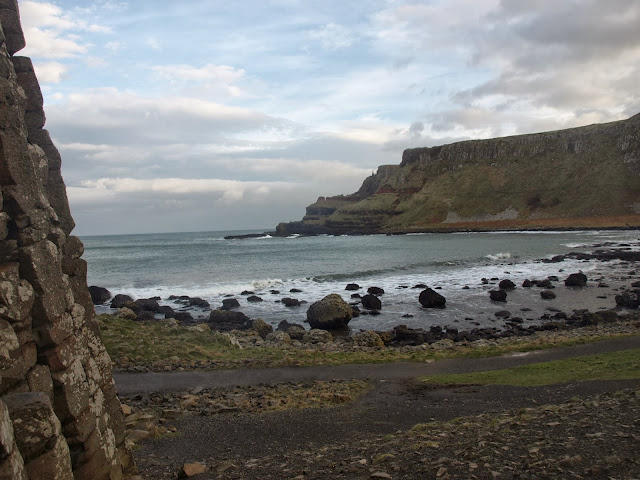









.jpg)











.jpg)































